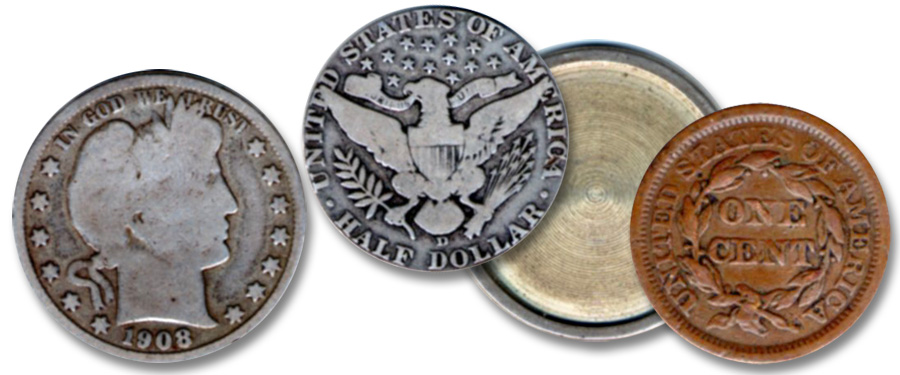
Magician’s coins. We’ve all seen them, and some collectors – yours truly included – actually own a few of them in various “denominations.” A magician’s coin is typically a pair of mismatched denominations, often a cent and a dime, each with one side planed off and then paired back-to-back so it appears the coin has changed denominations when in the hands of a skilled prestidigitator. I have a few such pieces in my exonumia holdings, including Mercury dimes with Lincoln Wheat cent reverses, along with a few other concoctions that I have found irresistible over the years. One of my favorites is this installment’s coin, a 1908-D Barber half dollar that becomes the reverse of a large cent with skillful manipulation. The back of the coin was tooled so that the reverse lifted out of the obverse shell, the cut-out the same size as a large cent. The cut-out circle was planed and the large cent was affixed to the back side of the half dollar cut-out. When placed large cent side down in the hollow Barber obverse, it appears to be a whole Barber half dollar save for a tiny ring where the initial cut was done. That is of no matter, however, as the seam is only visible close-up and not to an excited audience. I can see the magician in my mind’s eye, turning the seemingly perfect half dollar end over end, revealing the obverse and reverse of this familiar coin to his or her audience, and then, with a lightning-like flick of the hand, a large cent has taken its place. I’ve yet to acquire the skills required for this, but owning the coin itself is a good beginning!
Next time we’ll look at some neat elongated coins made by yours truly at the August 1991 ANA Centennial Convention held in Chicago/Rosemont, Illinois.





